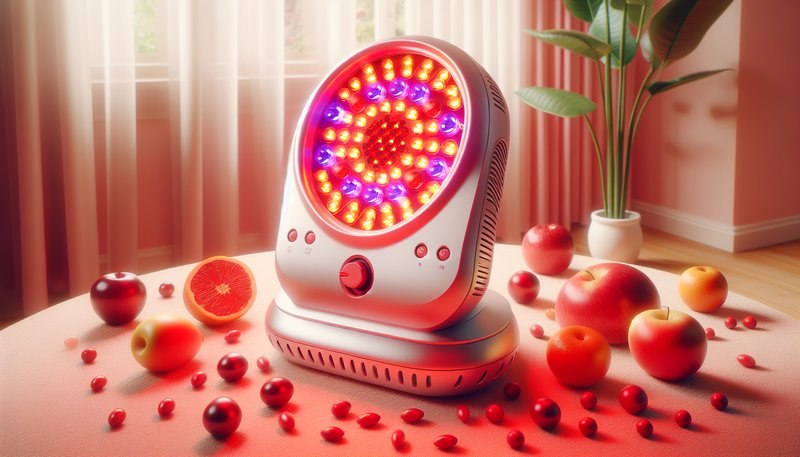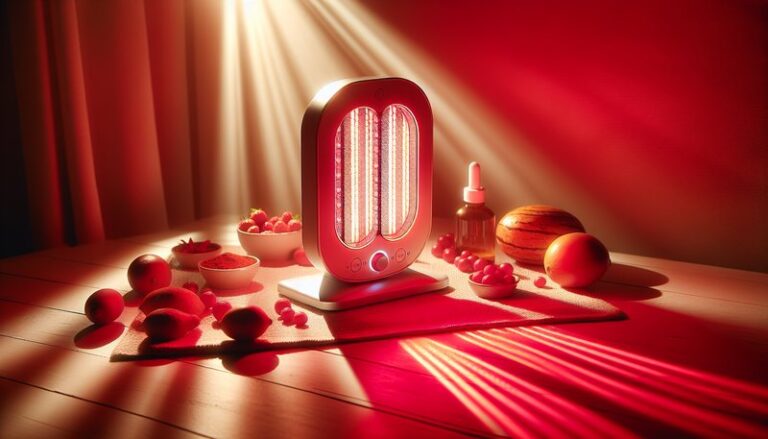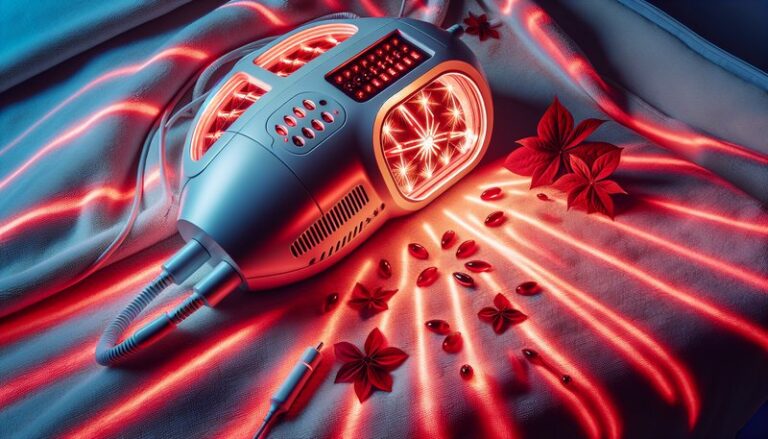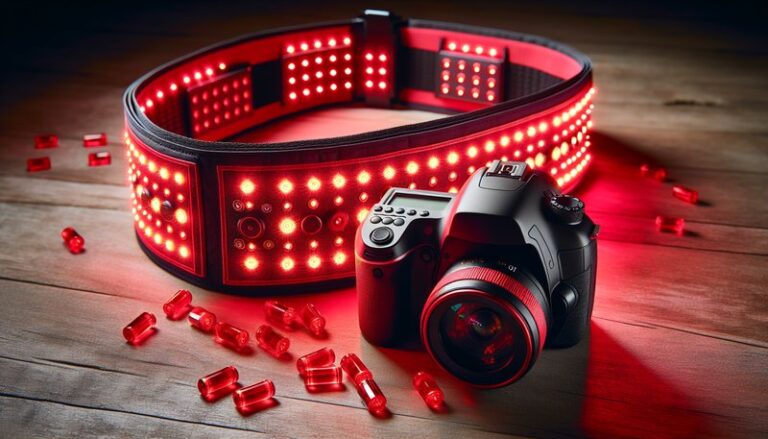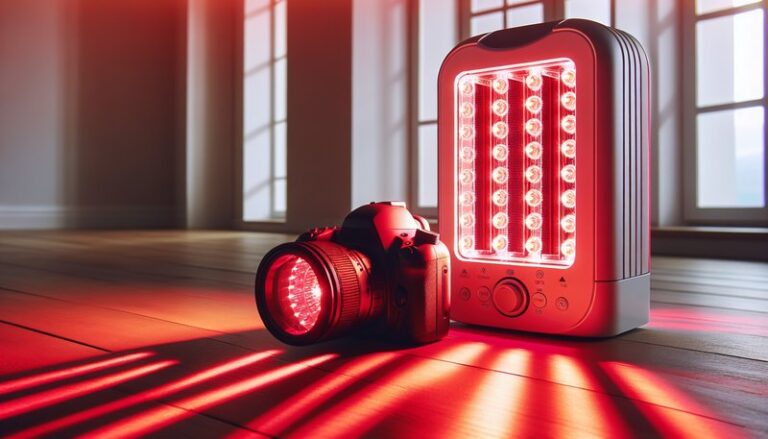Is Red Light Therapy Uvb?
Is red light therapy synonymous with UVB radiation?
In this article, we will explore the distinctions between red light therapy and UVB light, delving into the mechanics, benefits, and misconceptions surrounding these forms of light therapy. By the end, you will have a clear understanding of whether red light therapy can be classified as UVB and what implications this has for its use.
Key Takeaways
- Red light therapy uses wavelengths from 620 to 750 nanometers, while UVB light ranges from 280 to 320 nanometers.
- Red light therapy is known for its potential skin benefits, such as promoting healing and reducing inflammation, without the harmful effects associated with UVB exposure.
- Understanding the differences can help individuals choose the right therapy for their needs.
What is Red Light Therapy?
Red light therapy (RLT), also known as low-level laser therapy (LLLT), involves exposure to low levels of red light and near-infrared light. Unlike UV light, which has a shorter wavelength and can be harmful to skin cells, red light promotes various therapeutic effects.
RLT operates in the wavelength range of approximately 620 to 750 nanometers. This spectrum penetrates the skin and stimulates cellular activity, enhancing the body’s natural healing processes. Unlike ultraviolet light, which is linked to skin damage and increased risks of skin cancer, red light is considered safe for regular use.
How Red Light Works
Red light therapy encourages cellular metabolism by enhancing ATP (adenosine triphosphate) production, which leads to increased energy for cells. This mechanism is particularly beneficial for:
- Skin Health: Stimulating collagen production, which can reduce wrinkles and improve skin texture.
- Muscle Recovery: Enhancing blood flow and decreasing inflammation, aiding athletes and active individuals in recovery.
- Pain Relief: Targeting inflammation and promoting tissue repair in conditions such as arthritis and tendonitis.
What are the Benefits of Red Light Therapy?
The benefits of red light therapy extend across various applications, from cosmetic enhancements to medical treatments. Below, we detail some of the key advantages.
Skin Rejuvenation
Red light therapy has been shown to improve skin appearance significantly. Regular use can enhance collagen production, resulting in firmer skin and reduced fine lines and wrinkles. Clinical trials have indicated noticeable improvements in skin elasticity and overall tone.
Reduced Inflammation
One of the most significant benefits of RLT is its ability to reduce inflammation and promote healing in injured tissues. This makes it ideal for individuals recovering from surgeries or sports-related injuries.
Improved Healing of Wounds
Research shows that red light therapy can accelerate the healing of wounds and injuries. It stimulates the body’s natural healing processes, which can be particularly beneficial for chronic wounds and post-surgical recovery.
Enhanced Muscle Recovery
Athletes use red light therapy to speed up muscle recovery after intense workouts. Studies suggest that RLT can decrease muscle soreness and improve performance in subsequent training sessions.
Is it Possible to Use Red Light Therapy for UVB Effects?
While red light therapy can provide numerous skin benefits, it is not designed to replicate the effects of UVB light, such as the synthesis of vitamin D. UVB radiation plays a critical role in vitamin D metabolism by triggering the skin’s production of this essential nutrient.
What are the Advantages of Using Red Light Therapy Instead of UVB?
Red light therapy offers several advantages over UVB exposure:
- Safety Profile: Unlike UVB, RLT does not increase the risk of skin damage or skin cancer.
- No Tanning Effect: RLT does not provoke the tanning response associated with UVB, making it a more skin-friendly option for increasing skin health.
- Wide Applicability: RLT can be used safely on all skin types and is suitable for various health conditions.
What are the Disadvantages of Using Red Light Therapy?
While RLT is beneficial, it is essential to explore potential drawbacks:
- Limited Vitamin D Synthesis: RLT does not promote the natural production of vitamin D, which is crucial for overall health.
- Potential for Overuse: Misuse or excessive exposure to RLT devices can lead to skin irritation.
What are the Things to Consider Before Starting Red Light Therapy?
Before embarking on a red light therapy regimen, consider the following factors:
Consulting a Professional
Always consult with a healthcare professional before starting RLT, especially if you have underlying health conditions or skin sensitivities.
Read the deep dive on NASA Red Light Therapy?
Device Quality
Not all red light therapy devices are created equal. Ensuring that you select a high-quality, clinically-tested device can enhance your results and minimize risks.
Treatment Frequency
Determine frequency and duration based on specific goals. Following recommended guidelines is vital for achieving desired outcomes without side effects.
Get all the info in Red Light Therapy Duration for Face
What are the Alternatives to Red Light Therapy?
In addition to red light therapy, several other options exist for skin and health improvement:
UVB Therapy
Ultraviolet B therapy is often used for treating skin conditions such as psoriasis and eczema, promoting vitamin D synthesis while bearing risks of skin damage.
Blue Light Therapy
Primarily used for treating acne, blue light therapy helps eliminate acne-causing bacteria without the risks associated with UVB exposure.
Laser Therapy
Laser treatments can address various skin conditions, including scars and pigmentation issues, but often come with more significant risks and recovery periods.
Conclusion: Is it Recommended to Use Red Light Therapy?
In summary, red light therapy is a beneficial tool for skin health, pain relief, and muscle recovery, clearly distinct from UVB therapy. It offers numerous advantages without many of the risks associated with UV exposure. However, it is essential to recognize its limitations, particularly in relation to vitamin D synthesis. Consulting with health professionals and selecting the right device are crucial steps toward successfully integrating red light therapy into a wellness routine.
Frequently Asked Questions
Is red light therapy safe for all skin types?
Yes, red light therapy is considered safe for all skin types and can be used without the risk of sunburn or skin cancer.
How often should I use red light therapy for optimal results?
Most users benefit from sessions of 10 to 20 minutes, two to three times per week, but results can vary based on individual needs and conditions.
Can I use red light therapy while on medication?
While generally safe, it is advisable to consult with a healthcare provider before using red light therapy if you are on specific medications, particularly those that may increase photosensitivity.
Are there side effects associated with red light therapy?
Side effects are generally rare and mild, including temporary redness or irritation in the treated area. Adjusting exposure times can usually prevent these issues.
